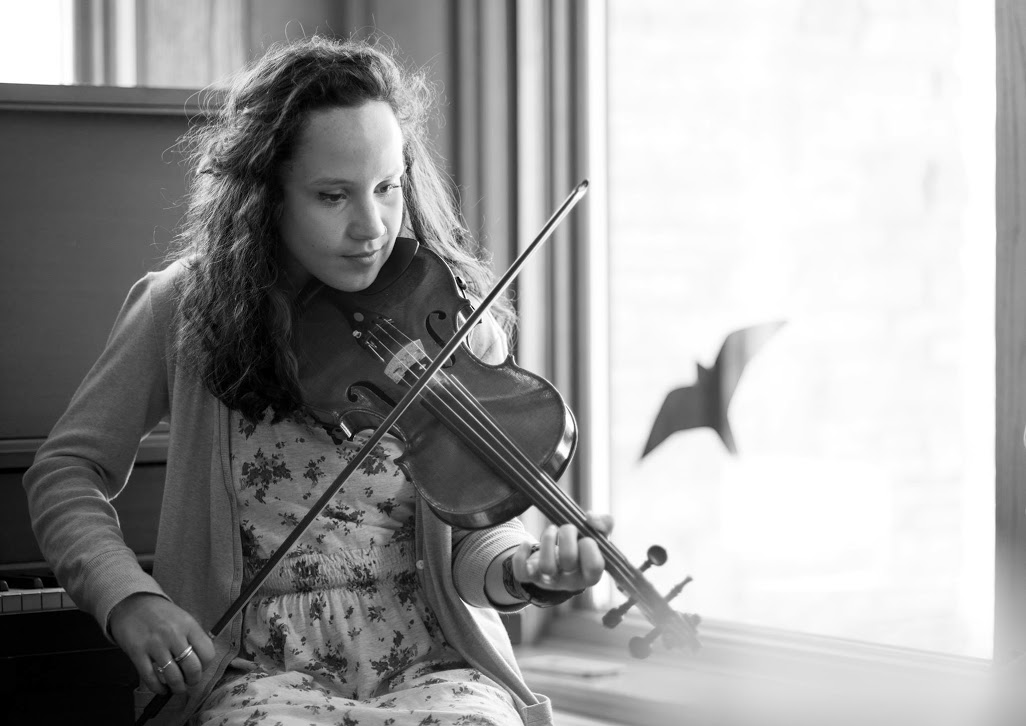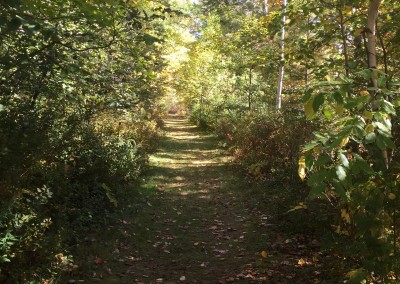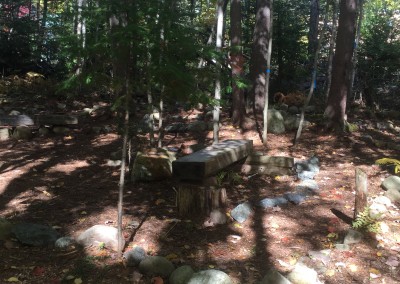By Izzy Padrón
No, this article is not about David Bowie or the disturbing Spanish movie with the creepy-looking, no-eyed, child-eating monster. In this piece, I would like to introduce our very own Paul Smith’s College Labyrinth to the campus community, especially those unaware we had one. Eric Holmlund and Kendra Ormerod’s Nature and Art students are working on the maintenance, aesthetics, accessibility, and design for a labyrinth that we’ve actually had on campus for a while, but has not been regularly maintained.
According to The Labyrinth Society, an international organization of labyrinth enthusiasts, a labyrinth is a single path, or unicursal tool, for personal, psychological, and spiritual transformation. This intrigues me because almost any other definition listed on Google describes labyrinths as connected paths that are confusing, difficult to navigate, and unnerving for whomever is engaged. From what we have learned in class, labyrinths must not be confused with mazes, which are intricate formations of multiple paths, as opposed to one path, likely to dissect or become dead ends, but extremely satisfying for the participant when they find their way out.
The origin of labyrinths is unclear, as they have been found throughout the world dating back to earliest antiquity. Chartres Cathedral near Paris, France, is one of the oldest and most recognized labyrinths. It is estimated to have been built in the early 1200s. Those walking the labyrinth in the 1200s were doing so as a pilgrimage or act of repentance. The pilgrimage was seen as a walk to become closer to God. Repenters completed the labyrinth on their knees. Churchgoers are encouraged to walk the labyrinth during Lent or Advent. The meaning and journey of other labyrinths around the world not only resonate with believers in God, but anyone in search of meditation or personal grounding. There are over 5200 labyrinths in more than 80 countries around the world. When searching with the World-Wide Labyrinth Locator created by The Labyrinth Society, you can explore the different designs around the world. Interestingly enough, there are more than 11 labyrinths within a 50 mile radius of Saranac Lake. Two of them are in Lake Clear.
For labyrinths like the one found on campus, the psychological and spiritual transformation is up to the individual entering. There may be a conflict, relationship issue, or other life obstacle causing tormenting thoughts. A life event may be causing incredible stress, or perhaps there is unhappiness for no identified reason. Whatever the burden may be, it is believed that walking a labyrinth will help that problem find peace.
Our labyrinth is outlined in stones, with what will be one distinguished entrance. Traditionally, once the individual has reached the center of the labyrinth and finished reflecting, they will reverse direction and retrace their steps out. John Algeo, vice-president of the Theosophical Society, emphasizes the importance of completing the labyrinth by following the path both inward and outward, as opposed to cutting across at any point. Walking in must be directly complemented by walking out. If a group of people want to walk the labyrinth together, it should be done in meditative silence or with small, non-verbal gestures.
A labyrinth should be seen not as a somber experience, but a joyful one. The quiet is only for concentrating on thoughts, or letting other individuals concentrate on their thoughts. When entering the labyrinth, the time for reflection begins whether the reflection is focused or undetermined. By following the cyclical pattern, a pattern known to generate calming, the individual will ideally reach the solution to their problem, a better grasp on it, or acceptance for where they stand on the burden currently. If there was no issue the walker was hoping to address, the experience of thoughtful meditation hopefully was found enjoyable.
I leave you without the location of our PSC labyrinth but have included pictures as clues. Whether you’re a student, faculty, or visitor to campus, I hope the labyrinth brings you peace, personal understanding, and positive reflection.
Feel free to leave a comment if you’ve found the labyrinth on campus, if you’ve used it before, or if you feel it helped you in any way.

Isabella Padron
Isabella, widely known as Izzy, is a second semester senior majoring in Recreation. She lives in Saranac Lake with her cockatiel, Besito. Besides writing, Izzy loves to paddle, travel, and play lots of music.





